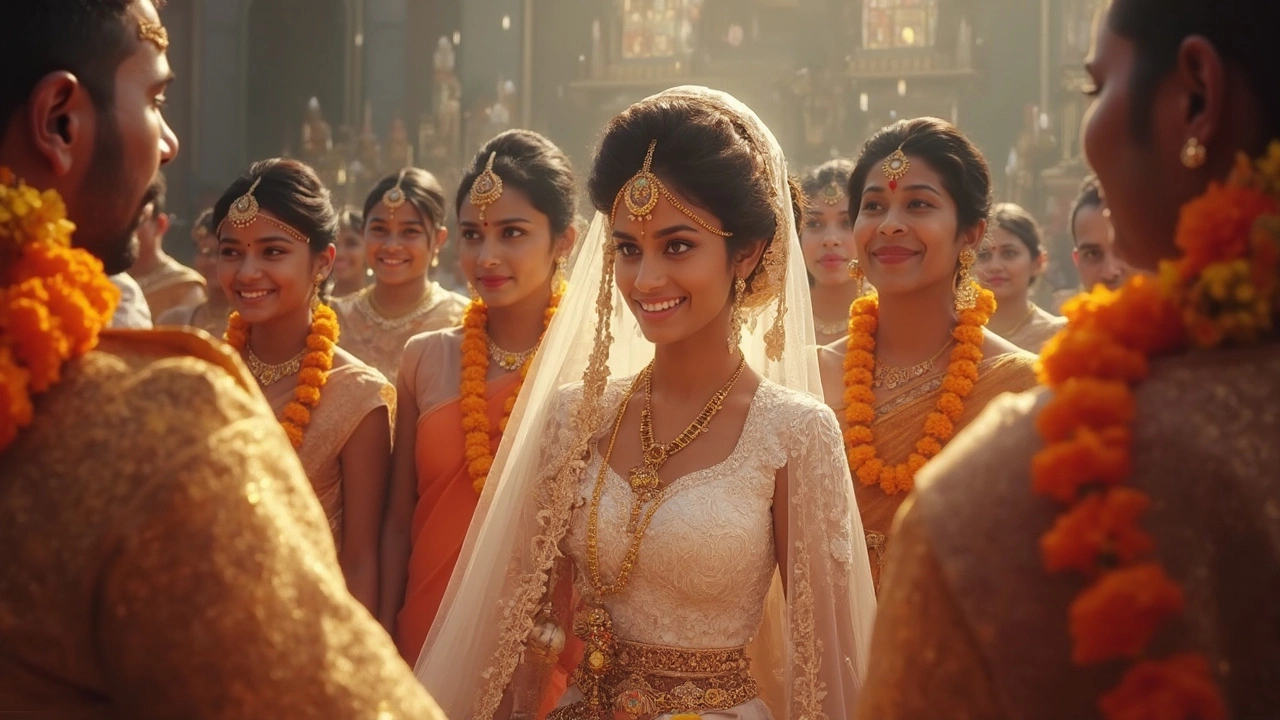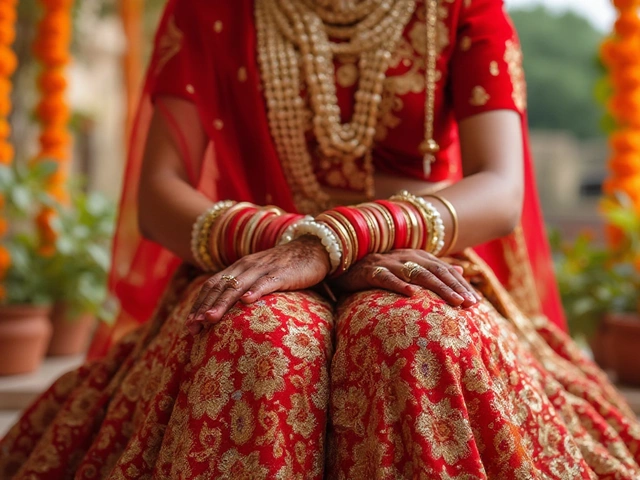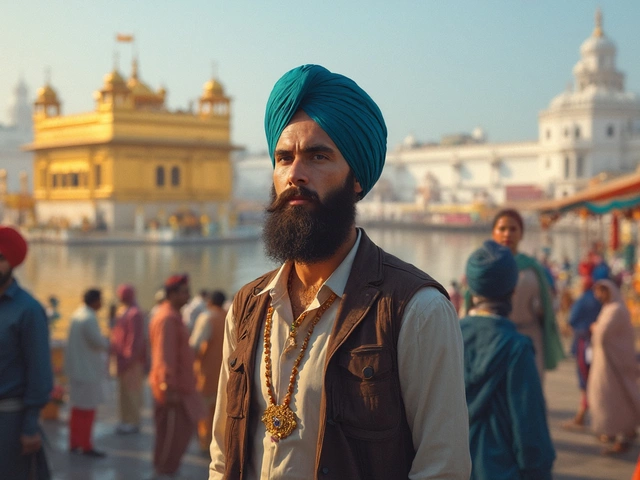Alright, let’s talk about something that’s as fascinating as it is intricate: the tradition of the mangalsutra. If you’ve ever caught a glimpse of Indian weddings, you’ve probably noticed that stunning black and gold necklace on the bride. It’s not just any piece of jewelry; it's steeped in meaning and drenched in tradition.
But here’s the interesting twist: do Christians, especially in India, tie a mangalsutra at their weddings? You might think, 'Nah, that’s not part of a Christian ceremony.' But hang on! India is a melting pot of cultures. There are plenty of Christians here who blend traditional Indian practices with their ceremonies, adding a mangalsutra to signify marriage.
So how did this cultural crossover happen? Well, it’s all about fusion. Mixing different traditions isn’t all that uncommon. In fact, it's becoming quite the trend in urban weddings. You’ve got couples wanting a slice of both worlds—the beauty of their heritage and the influences of the global culture. It's like having your cake and eating it too!
- Understanding the Mangalsutra Tradition
- Christian Wedding Traditions
- Cultural Blending in Modern Weddings
- Modern Mangalsutra Designs
- Tips for Choosing Wedding Jewelry
Understanding the Mangalsutra Tradition
So, what's really behind the mangalsutra? It’s more than just an eye-catching necklace. In Indian culture, especially among Hindus, the mangalsutra is a significant symbol of marriage. Picture this: it’s like a wedding ring but worn around the neck.
The word 'mangalsutra' is made up of two words: 'mangal' meaning holy or auspicious, and 'sutra' meaning thread. Traditionally, it is made of black beads strung together on a gold or yellow thread. The black beads are believed to ward off evil, keeping the married couple safe and happy.
Let’s say you're attending a traditional South Indian wedding. You might see the groom tying the mangalsutra around the bride's neck in a ceremony called the 'mangalyadharanam.' It’s a highlight of the wedding, signifying the completion of the marriage ritual. This tradition emphasizes the sacred bond between husband and wife.
While the traditional design is pretty consistent, people often customize their mangalsutras these days. Some add diamonds, different gemstones, or even redesign the entire thing to suit personal style while still keeping that same symbolic connection.
Here’s a fun fact you might not know: the length of the mangalsutra can vary depending on regional customs. In some places, it's shorter, just like a choker, while in others, it’s longer, almost reaching the waist.
Although this might seem niche, the mangalsutra has evolved over time and it’s not limited to traditional styles anymore. With changing times, you’ll find modern and sleek designs that fit right into today’s fashion while still holding onto their cultural roots.
And there you go—it's more than just jewelry. This little chain carries stories, beliefs, and a whole lot of tradition!
Christian Wedding Traditions
Christian weddings, much like any other, are full of symbolism and rituals that reflect centuries-old traditions. Typically, these ceremonies are held in churches and officiated by a priest or pastor. But sometimes, you might find a curious blend of old and new, especially in a culturally diverse country like India.
In a traditional Christian marriage, the core events include exchanging vows, giving rings, and signing the marriage register. The vows are the heart of the ceremony, where the bride and groom pledge their lifelong commitment to each other. Rings are exchanged as a symbol of their love and unity. This is pretty standard across various Christian denominations.
But here's where it gets interesting. Indian Christians often sprinkle in local customs, embracing elements like music, dance, and even traditional attire. It’s quite a spectacle! Instead of wedding gowns, you might see brides wearing saris or lehengas in vibrant colors, making for a beautiful cross-cultural experience.
These weddings also have a reception where families come together to celebrate with food, music, and loads of fun. Another traditional element is the cutting of a wedding cake, something that symbolizes the couple's shared future and prosperity. This fusion of Christian and local customs makes these weddings uniquely charming.
In a nutshell, while the core religious elements remain constant, it’s the cultural additions that make each ceremony so special. Whether it's the addition of a mangalsutra or local attire, these tweaks are what make an Indian Christian wedding a delightful blend of existing traditions and new-age trends.
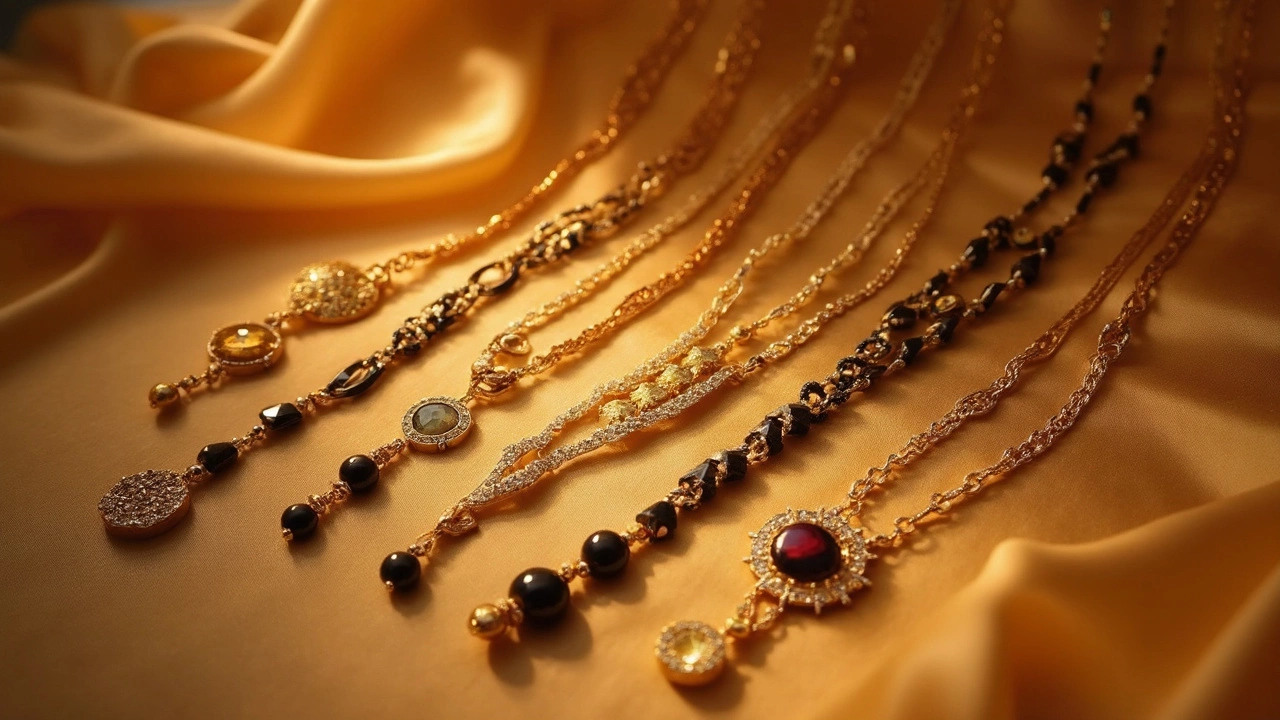
Cultural Blending in Modern Weddings
So, let’s break down the magic of cultural blending in today's weddings. Imagine this: a beautiful fusion where traditional boundaries blur, and you’ve got the best of both worlds. It's like fusion cuisine but for weddings. In countries like India where diverse cultures rub shoulders daily, it’s common to see wedding ceremonies that are part Christian, part Hindu, or involve bits from other cultures too.
Picture this scenario: a Christian groom and a Hindu bride. Their wedding might feature a priest for the vows and a ceremony where a mangalsutra is tied. It’s not just about wearing the necklace; it’s about honoring both families and respecting shared values. Such combinations aren’t merely for show but signify unity and mutual respect.
And honestly, isn’t this blend perfect for today’s world where traditions meet trends? In cities like Mumbai and Chennai, many weddings feature the bride in a white gown for one ceremony and traditional attire for another. These modern-day couples are choosing what feels right for them, creating a personal mosaic of cultural elements that speak to their identity.
But it's not just limited to those cities. Across the globe, people are increasingly integrating different customs. According to a survey by Indian Weddings Magazine, over 40% of urban couples opted for a mixed-culture wedding, highlighting elements from each other's traditions to create a unique celebration. This trend is a testament to the love for family history while embracing the present’s diversity.
So, why is this important? Well, it opens doors to deeper discussions about heritage and allows couples to start their journey with shared respect. Plus, who doesn’t love a wedding that surprises with an unexpected twist, right?
Modern Mangalsutra Designs
Let’s dig into the vibrant world of modern mangalsutra designs. You know, gone are the days when a mangalsutra looked the same for everyone. These days, it’s like an explosion of creativity, with designers pushing boundaries to blend tradition with fashion.
One hot trend is the minimalist mangalsutra. Think sleek and chic, where less is more. Instead of heavy gold pendants, you’ll find dainty gold chains with a small, elegant centerpiece. Some designs even use diamonds or other precious stones to add a touch of sparkle.
Then, there’s the dual-tone trend. Why settle for just gold or silver when you can have both? Mixing metals not only adds contrast but also makes the piece more versatile. You can wear it with just about any outfit, traditional or modern.
Another popular choice is personalized mangalsutras. Couples are opting for initials or even tiny symbols that have a special meaning. This way, the necklace isn’t just a symbol of marriage, but a personal keepsake. How cool is that?
For those who want to blend the classic with the new, contemporary mangalsutras have intricate designs or themes, like floral or geometric patterns. These pieces are still rooted in tradition but have a modern twist that makes them stand out.
Here's an interesting nugget: Some women are even choosing adjustable chains. So whether you want it short or long, you have control. How practical!
A swanky and stylish mangalsutra not only celebrates tradition but also gives modern brides a chance to showcase their personal style. It’s a beautiful intersection of the old and the new, and the options are limitless!
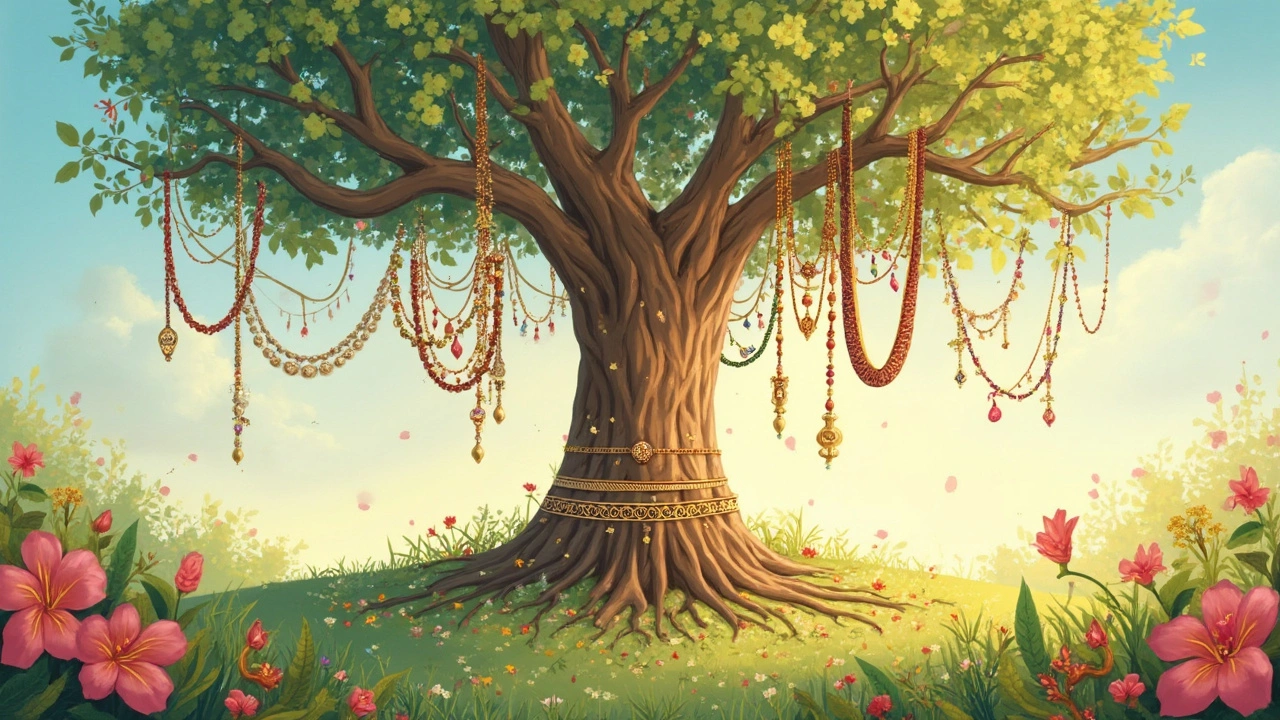
Tips for Choosing Wedding Jewelry
Picking the perfect wedding jewelry can feel like solving a complex puzzle, especially when you're trying to blend tradition with modern style. Whether you're leaning towards a classic look or something trendy, here's how you can make the right choices.
First things first, always consider the neckline of your dress when choosing a necklace like a mangalsutra. If your dress is more traditional, perhaps with a saree or lehenga, a heavier design might work. For gowns or more contemporary styles, something sleek and understated could be your better bet.
Think about the metal! Mixing metals is a thing these days—gold with silver or rose gold with traditional yellow gold can create a striking effect and gives you flexibility in matching with other accessories.
- Match tones and colors: Your skin tone plays a part here. Yellow gold tends to go well with warmer tones, while white gold or silver complements cooler tones.
- Comfort is key: You’ll be wearing this stuff all day, so it's gotta be comfortable. Ya know, nothing poking or prodding!
- Personal style: It’s your day, so your personality should shine through. If you like bold, statement pieces, go for it! If minimalism is your game, keep it simple.
Budget cautiously. Jewelry can get pricey fast, and you don’t want to blow the entire wedding budget here. A handy tip? Look for versatile pieces that you can wear even after the big day.
And hey, don’t forget about heirlooms! Sometimes, family jewelry adds a touch of timeless elegance and a personal story that's hard to beat with newly bought things.
Lastly, if you’re considering a mangalsutra for your Christian wedding, look for designs that incorporate subtle elements of your faith or personal journey. This symbol can be as modern or as classic as you want, while still holding its meaningful essence.
